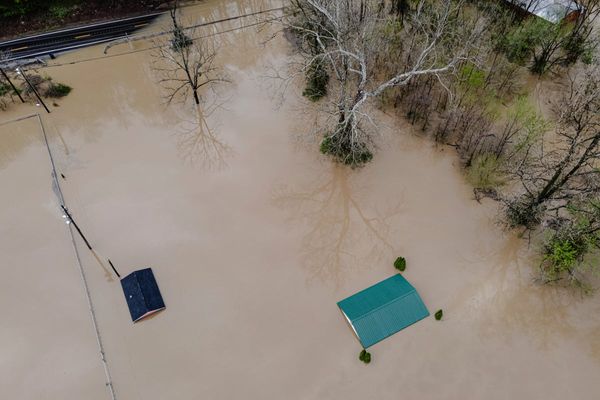
“Patient” is a useful word for the reserve bank governor, Philip Lowe, when it comes to the timing of any interest rate rise. It’s vague and gives few clues as to how much time is left.
After Tuesday’s RBA meeting, Lowe said the bank’s board “was prepared to be patient as it monitors how the various factors affecting inflation in Australia evolve”. He echoed the sentiment at Wednesday’s National Press Club address on the year ahead.
We know Lowe would like wage rises to be “sustainably” higher than underlying inflation but we remain in the dark about how much they need to rise – and for how long – before the RBA would lift the official cash rate from the record low 0.1% annual rate it has sat at since November 2020.
That matters for borrowers on variable interest rates but also for those experiencing price rises that are already making it hard to get by.
It’s not that clear what constitutes “wages” for Lowe. Yes, there is the wage price index that he said had risen 2.25% in 2021 compared with the bank’s forecast of 1.75%.
The half percentage point miss isn’t bad given we’ve been in the midst of a pandemic for two years. But the gap was more than twice as big for the underlying inflation result, which came in at 2.6% in 2021 compared with the 1.5% forecast by the RBA, implying real wages were in retreat last year.
The RBA expects the wage price index to increase by 2.75% in 2022 and 3% in 2023. Its “central forecast” is for underlying inflation of 2.75% this year and next, suggesting that 2021’s loss in real wages won’t be made until at least 2024, depending on whether the index can keep outpacing inflation.
But the “broader measures of labour costs” seem to be what Lowe – and to some extent the prime minister, Scott Morrison, as he seeks re-election in May – are relying on to lift wage earners’ confidence they are keeping ahead of price rises.
These include superannuation contributions and “pay increases that arise from job switching and job reclassifications in a tight labour market” which is presumably going to be more common if the jobless rate drops below 4% as the RBA and the government expect.
Economists, such as the head of Australian economics for the country’s biggest lender CBA, Gareth Aird, aren’t happy about the haziness. He described Lowe as “opaque” when it comes to how much wages would need to rise before the RBA hikes rates.
“The RBA wants the annual rate of wages growth to be ‘3-point-something’ to ensure inflation is ‘sustainably within the target’,” Aird said in a briefing note. “But we are none the wiser on whether that means the governor wants to see the annual rate have a 3-handle on it before the cash rate is lifted or if a six-month annualised rate of 3% or above is sufficient.”
Financial markets pared back their punt on when the RBA would first move to raise the cash rate to 0.25% after Tuesday’s statement – picking June-July rather than May. The CBA and Westpac reckon that move will come in August and the ANZ expects September, although Lowe was careful not to give a clear steer.
Aird said the CBA’s internal data indicates the wage growth seen at the end of 2021 had extended into the early part of 2022 despite – or perhaps even because of – the Omicron Covid distortions. “An acceleration in wages growth is the natural response to a tight labour market,” he said, adding that trend reinforces the CBA’s forecast of an August rate rise.
Lowe said Australia’s labor market had quirks such as wage negotiations that were often annual if not tri-annual events, supporting his rates caution. There is “substantial inertia in aggregate wage outcomes even if there are large wage increases in some pockets”, he said.
Those workers, though, who are relatively early into their negotiation period won’t take much consolation from soaring prices now. Nor can they assume their lag will be caught if inflation gets away.
New Zealand’s experience may offer some pointers, particularly for politicians on this side of the Tasman.
Figures out on Wednesday showed unemployment there fell to a record low 3.2% in December, with further tightening to come.
The ANZ described it as a “highly inflationary set of labour market data”, and said the Reserve Bank of New Zealand would need to lift the interest rate at every meeting until the cash rate is 3% by April 2023.
New Zealanders’ wages are rising, but only at a 2.8% annual clip compared with inflation running at almost 6%.
“As workers use their newfound bargaining power to demand larger-than-usual wage rises to compensate for surging inflation, that is likely to exacerbate the rise in domestic inflation pressures over 2022,” the ANZ said.
Asked whether inflation could spike in Australia, Lowe reverted to form: “We are not worried about a massive inflation outbreak and are prepared to sit for a while.”
Lowe may have the patience of a saint but he doesn’t have a mortgage to pay – as he disclosed in Wednesday’s address.
Nor does he face the challenges of the 1.1 million people on jobseeker payments, 80% of whom have been on income support for over a year, according to the Australian Council of Social Service (Acoss).
People like Imogen, a Brisbane resident holding down part-time jobs in retailing and security, say their patience is worn thin by the debate over interest rates and politicians such as Morrison who don’t know the cost of daily basics such as bread, petrol and rapid antigen tests.
“I’m very cognisant of the price of these things,” said Imogen, who requested her surname not be used. “The thing right now is that I am just out of milk today … and my bread is at the point where I should throw it out because it’s a little bit harder than desirable.”
Rent eats up almost 80% of the support Imogen gets and if she earns extra she is penalised with reduced welfare payments. The economy may be recovering but if anything she has been going backwards.
“Workers are spending more than ever on essentials, literally bread, milk, petrol, transport and rent,” she said. “We’re not getting as much for our dollars as we used to get last year, five years ago, 20 years ago.”
The Acoss chief executive, Cassandra Goldie, says people on jobseeker and Youth Allowance are “back to skipping meals, especially in the last days of their pay fortnight, they often have zero money for days”.
“Most people on these very low payments can’t afford to own or drive a car, but if they do have one, they can’t afford to drive it as petrol prices climb.”







